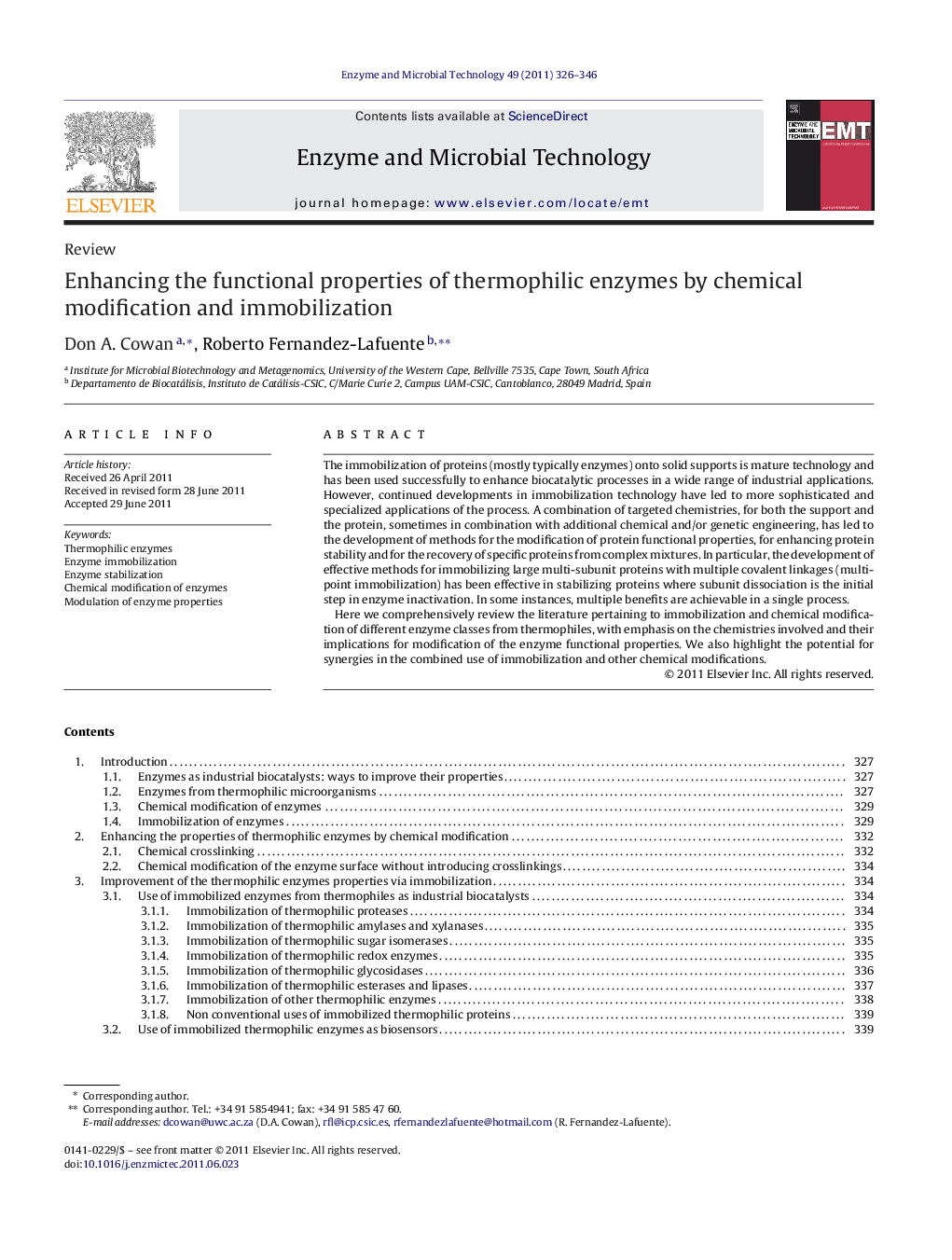| Article ID | Journal | Published Year | Pages | File Type |
|---|---|---|---|---|
| 17280 | Enzyme and Microbial Technology | 2011 | 21 Pages |
The immobilization of proteins (mostly typically enzymes) onto solid supports is mature technology and has been used successfully to enhance biocatalytic processes in a wide range of industrial applications. However, continued developments in immobilization technology have led to more sophisticated and specialized applications of the process. A combination of targeted chemistries, for both the support and the protein, sometimes in combination with additional chemical and/or genetic engineering, has led to the development of methods for the modification of protein functional properties, for enhancing protein stability and for the recovery of specific proteins from complex mixtures. In particular, the development of effective methods for immobilizing large multi-subunit proteins with multiple covalent linkages (multi-point immobilization) has been effective in stabilizing proteins where subunit dissociation is the initial step in enzyme inactivation. In some instances, multiple benefits are achievable in a single process.Here we comprehensively review the literature pertaining to immobilization and chemical modification of different enzyme classes from thermophiles, with emphasis on the chemistries involved and their implications for modification of the enzyme functional properties. We also highlight the potential for synergies in the combined use of immobilization and other chemical modifications.
